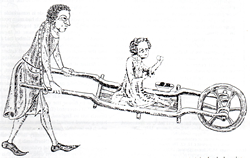Mouse Lane
Turn right into Mouse Lane which was once called Mill Lane but we have yet to find a reason for the change. One theory that Mouse is a corruption for Mousse, French for moss, seems improbable but here there are still natural springs seeping down the banks and this deep cut lane is certainly very wet in rain! Here you will see some more old cottages including on your right, Pompey Terrace, a row of cottages built by Breach and so called because he was born in Portsmouth.
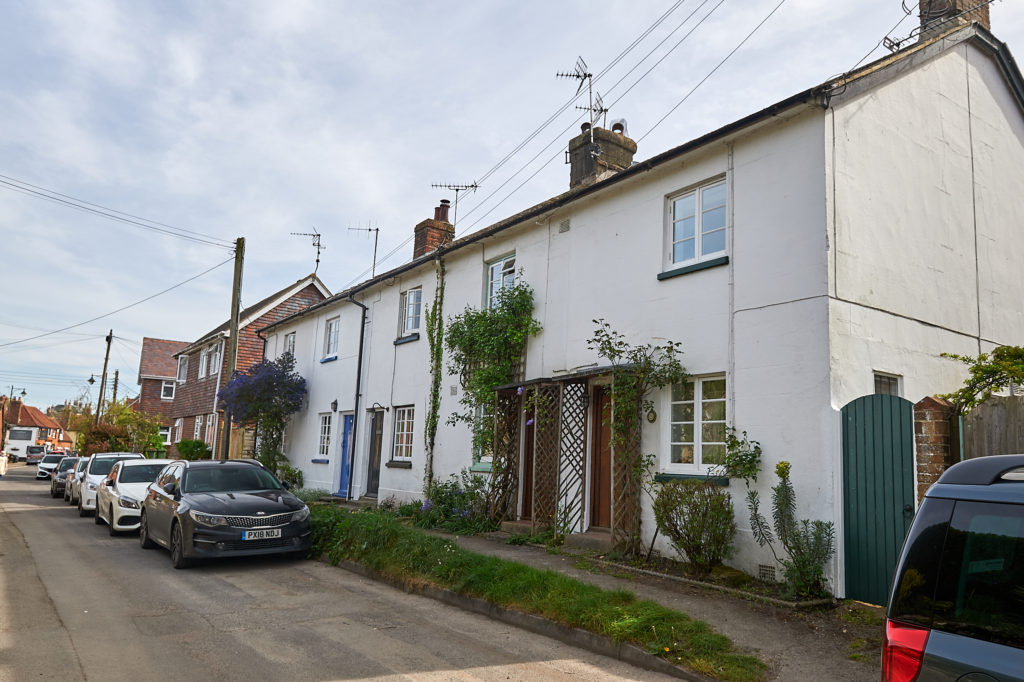
On the left, near the corner, is a building known as Workhouse Cottages. Now divided into three cottages this is an excellent example of the 15th. century type of timber-framed house called the Wealden and which is identified by its jettied or overhanging end bays and the pair of curved braces which support the large single roof. From Elizabethan times the poor and needy were the responsibility of each Parish and until the Poor Law Amendment Act of 1834 this building was used for this purpose. Under this Act the inmates were transferred to other institutions involving instances of families being separated and this caused a serious disturbance which is still known locally as the Steyning Riots.
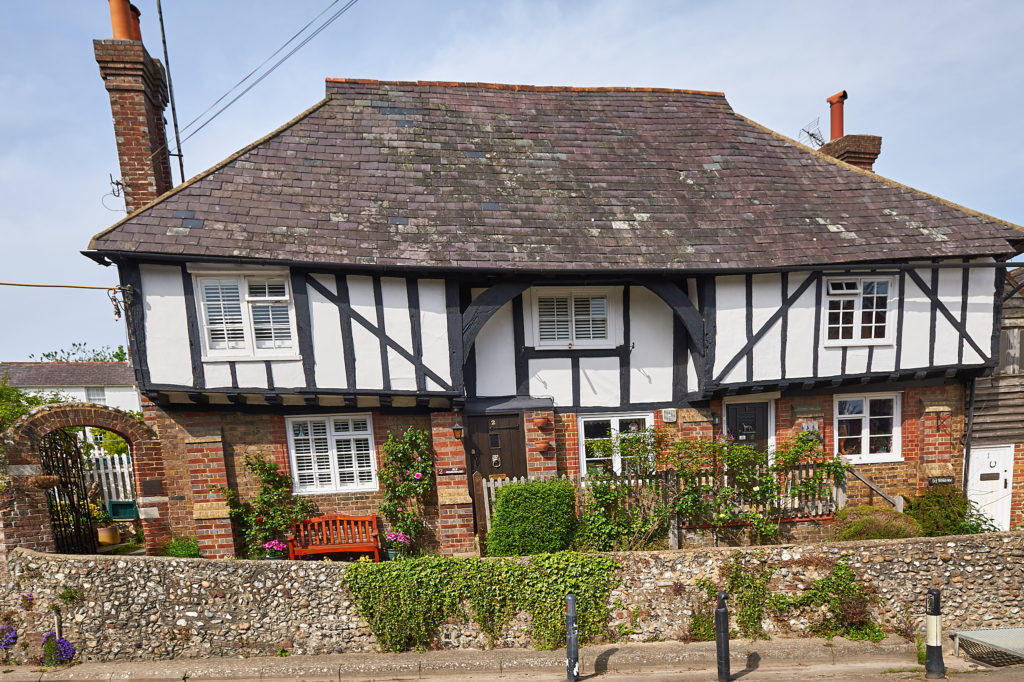
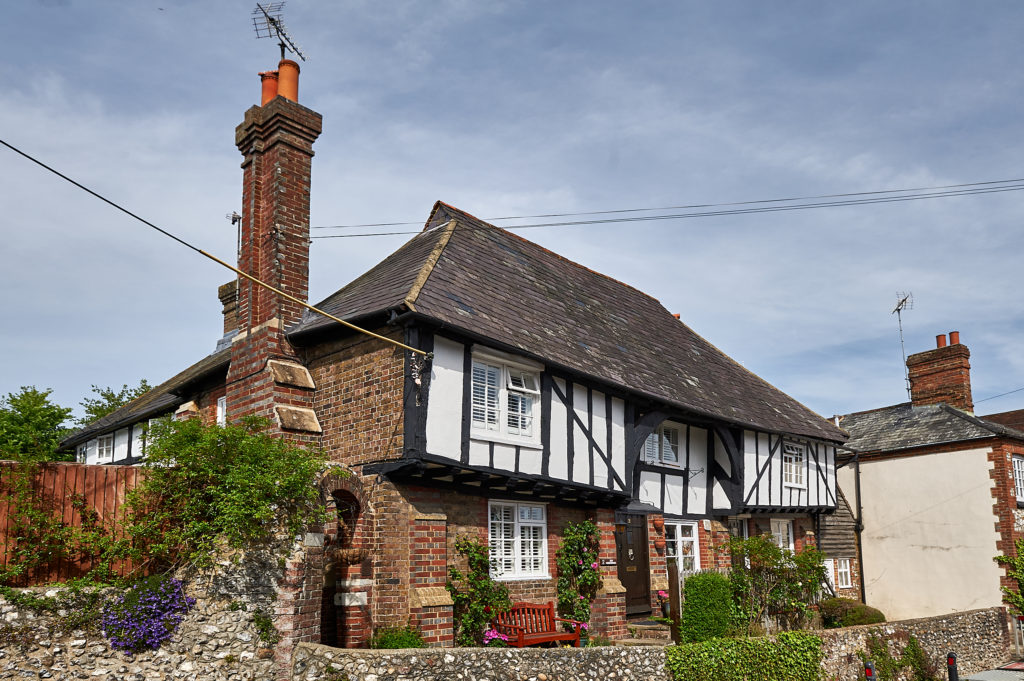
You are now at the junction with the High Street, a very dangerous corner so watch the traffic as you cross the road to return up the High Street on the left hand side. The corner building was once the George Inn, named after the Hanoverian monarch, but is now a residence. Steyning once had fourteen public houses but now only four remain. Closure of the railway accounted for two and probably competition closed the two very small ale houses in Charlton Street. Perhaps customers at the George had to limit consumption at this dangerous corner and caused a loss of trade!
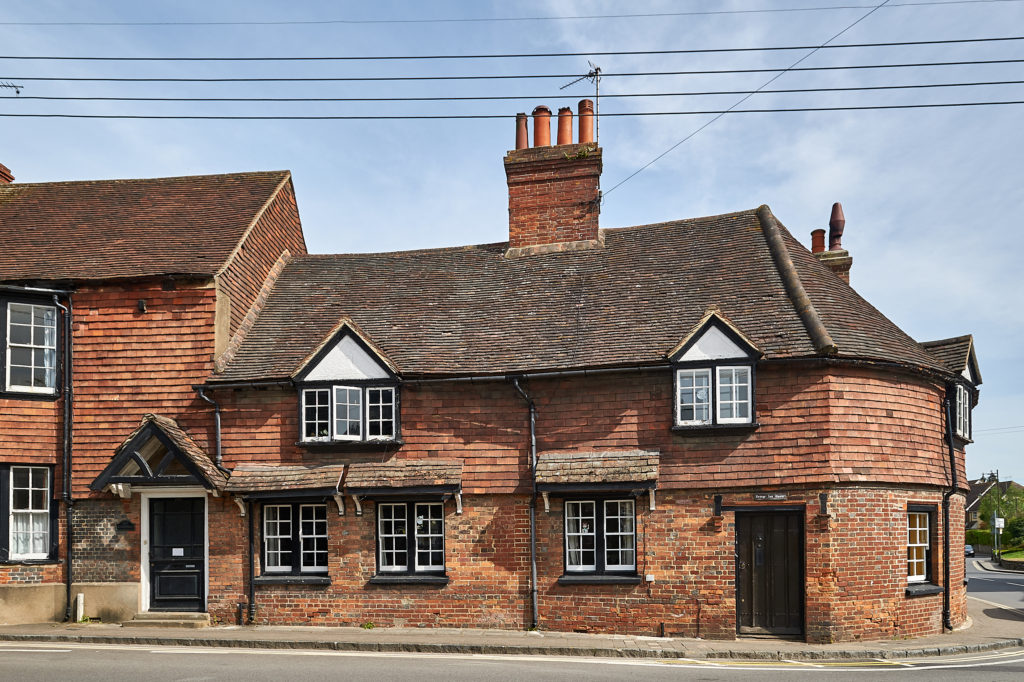
Please now proceed to the junction of the High Street (but take care crossing the road!) and then press Next.
